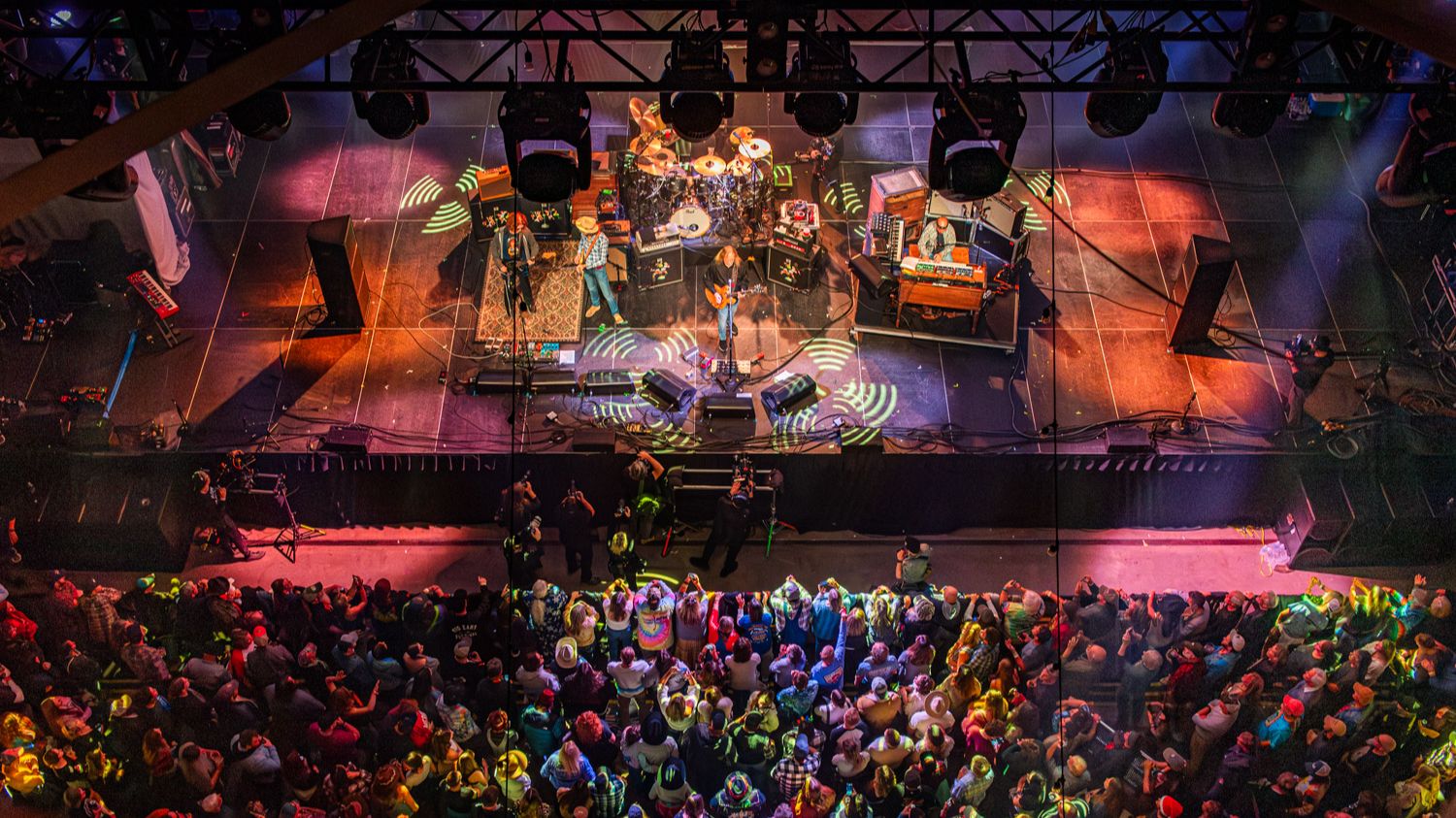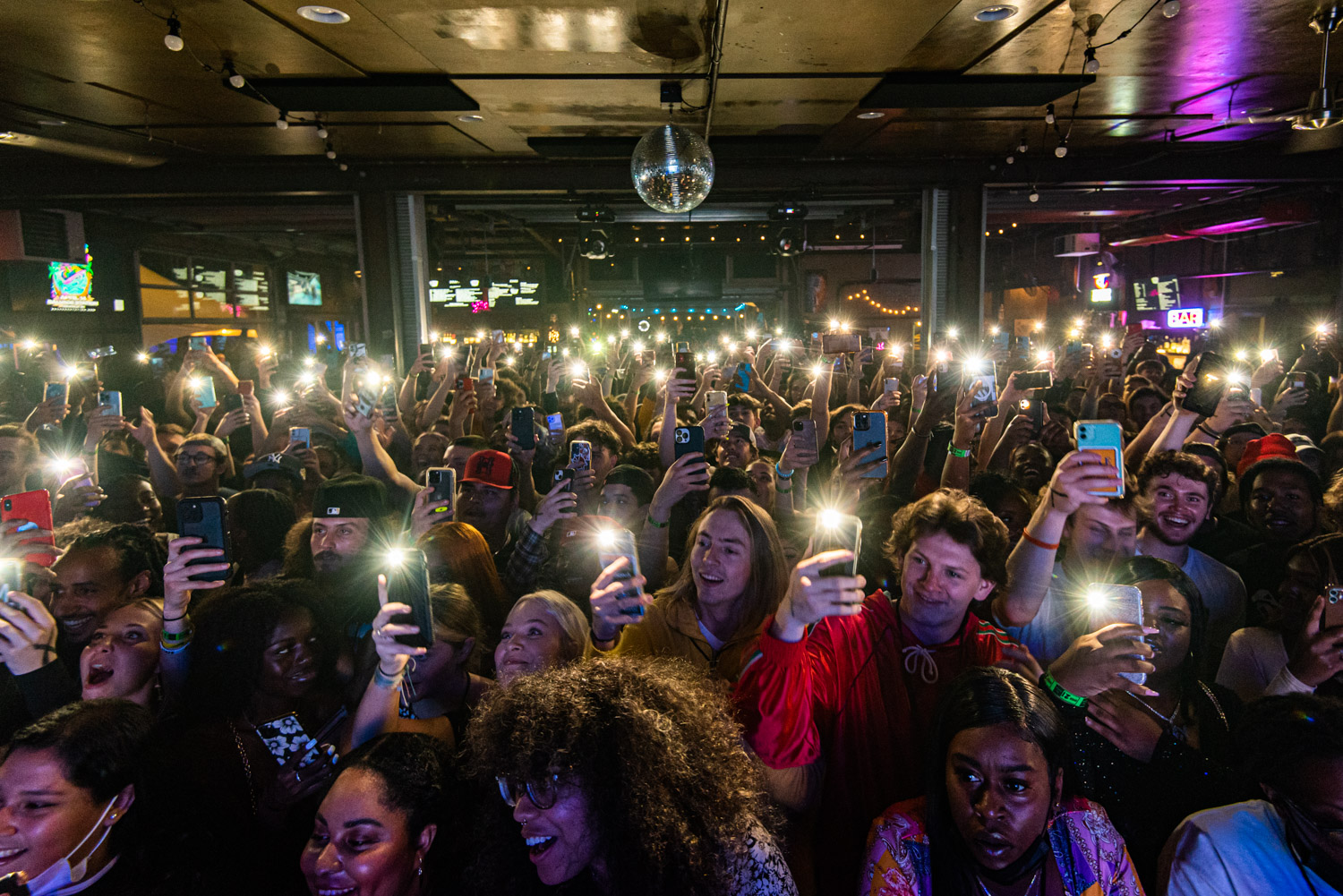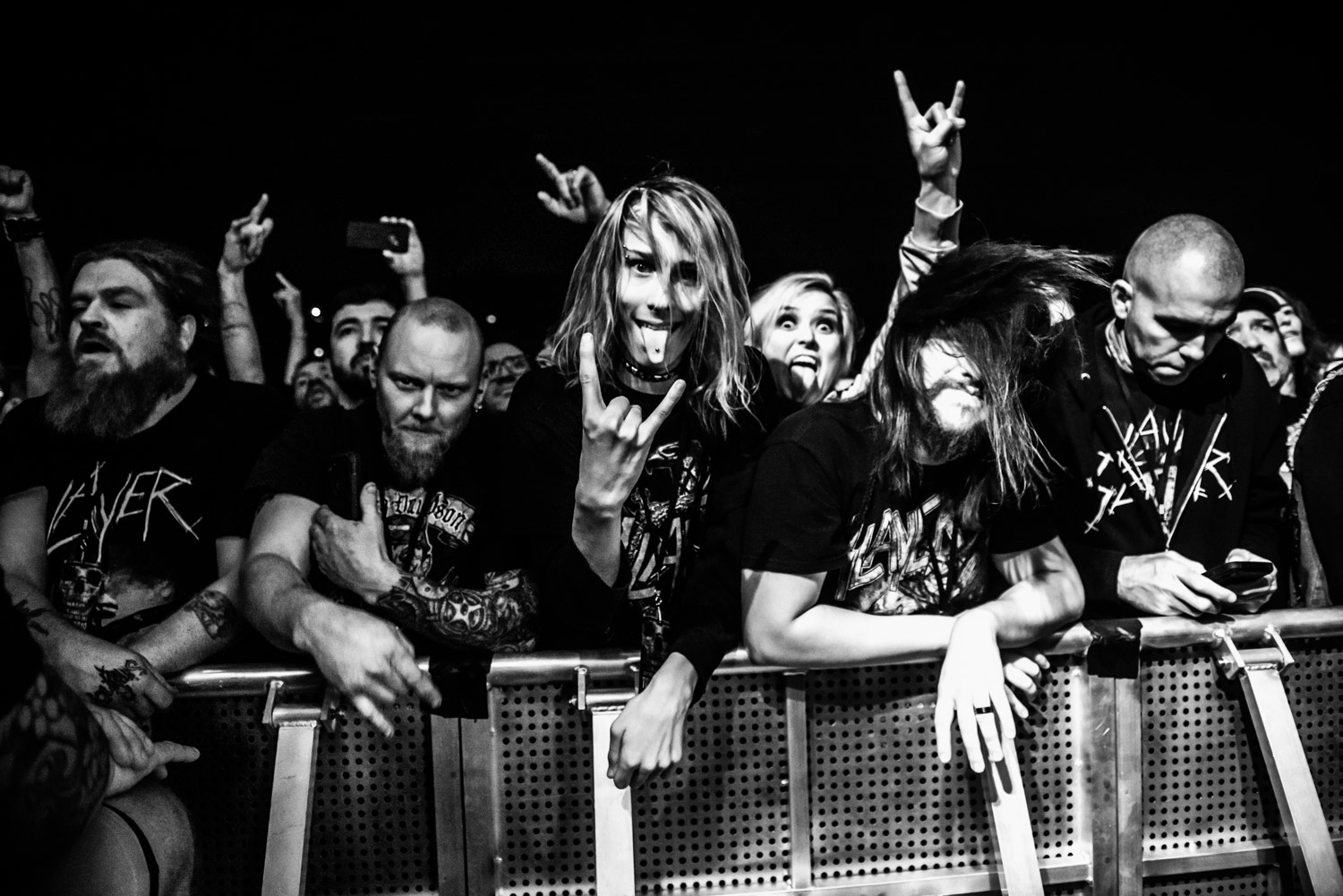Music Photography - 10 Photo Pit Etiquette Tips for Amateurs and Professionals
Sep 28, 2023
Are there actual written rules for photographers when shooting from the photo pit at a music event?
In most cases, there are the usual "3 songs / no flash" rules, with possible further instructions about "access" limitations, but that's usually about it, unfortunately. The rest are "unwritten"...
... until now.
I've been shooting shows regularly coming up on 15 years now, and it's been quite a journey -- particularly in the early years -- navigating photo pit etiquette, given the lack of concrete rules at most venues and events. But, with time comes experience -- some by naiveté, some by fire, some via helpful music photography veterans who want to maintain a level of professional integrity at the workplace and are willing to share their thoughts with others.
With ever-increasing amounts of inexperienced amateurs shooting concerts and festivals, it is becoming more and more apparent that many of these folks haven't yet met the types of pros that I met over the years, and I'm seeing a lot of (i.e., too many) newbie mistakes in the photo pit, and beyond. I'm also seeing frequent complaints posted in online groups and forums about the lack of professionalism at gigs, so my guess is that some folks who are reading this can totally relate to what I'm about to set out.
The fact is, whether you are getting paid or not, you still need to respect your peers and the profession and, of equal or more importance, respect the artists you are photographing, the fans that are there to see them, and the venue staff that put it all together.
There is a level of responsibility that comes with obtaining a photo pass for a show, and I'm hoping that this blog piece goes a long way in helping others (and, this advice isn't limited to amateurs, as I will detail below). I'm more than happy to be the aforementioned experienced pro that helps spread the (unwritten, but now written) word, with hopes to make all of our photography experiences at shows more enjoyable and, in some cases, safer.
Here's is my Top 10 list of "Photo Pit Rules" to abide by when you show up for a gig:

1. Why are you there? Most photographers that are issued a photo pass go through the proper channels, whether it is an artist's publicist (i.e., if you are shooting for a publication), the artist's management (i.e., if you are shooting directly for the band), the venue (for house photography duties), or utilize other well-defined avenues and protocols. In other words, you are granted a photo pass because you have a specific purpose to be there. You have a job to do for a paying client or sponsoring entity.
That said, I've covered events, as recently as this past summer, where a "fan with a camera", etc was given access, even though they weren't actually shooting for anybody but themselves ("I'm just here having some fun...", as one photographer claimed; "I'm friends with the band, and working on a personal project...", claimed another). In other words, they didn't really have a legitimate purpose for being in the photo pit. And, they ended up being a nuisance (an understatement), kind of like the infamous "Uncle Joe" with his camera at a wedding that rudely distracts the guests and gets in the official wedding photographer's way.
I'm all for enjoying such a privileged up-close-and-personal experience, or working on my technique or portfolio, but if you don't a have a good reason for taking up space in the photo pit (i.e., getting in the way of those who do have a good reason), then you shouldn't be there -- especially at stages with tight access between the stage and the barrier (sometimes referred to as "the rail").
2. No backpacks: This one should be obvious simply based on common courtesy, but I'm often baffled by how many photographers are in the pit wearing backpacks. I'm even more baffled when this person is a professional.
Photo pits are tight spaces. Wearing a backpack makes them even tighter for those around you. And, when you are caught up in the moment of a song, chances are that you are completely unaware of how your backpack just whacked into another photographer, or prevented her from repositioning.
Leave your backpack at the side of the pit, near security personnel (who, by the way, you should make friends with every chance possible). If you need to access your pack for another lens, so be it (though I recommend shooting with two camera bodies, each with a different lens). Change the lens away from others.
If you're worried about the security of your bag, I suggest you purchase insurance. There are risks involved with shooting in such an environment, and you should take measures to protect yourself from these risks. Knock on wood, but even though I have insurance, I have never had a problem with my pack (a small sling bag with a single lens in it, by the way) growing legs and walking away while I was shooting.
3. Attire - "Stage Blacks": Have you ever noticed what stagehands / roadies are wearing at the shows you shoot? Chances are almost 100%, they are wearing black, or very dark, clothing (referred to as "stage blacks"). And, there is a reason for that: they try to be as stealth / unnoticeable as possible to the fans and artists. They make an effort to not draw attention to themselves.
As a photographer, you should do the same, even if your access is limited to the photo pit, with no stage access.
Looking back, this is one rule that probably took me a while to catch on to as it was never explained to me. Nowadays, my work "uniform" consists of black trousers or shorts, a black shirt, black socks and shoes, and a black baseball cap. Do I don my business logo on my shirt and cap? Yes, but not obnoxiously, and I certainly don't stand out like the guy who recently showed up wearing an Hawaiian shirt (who happened to be the same guy who claimed to be there "to have some fun", who was also wearing a bulky backpack...).
So, when in doubt, wear black.
One of the biggest compliments you can get from someone who sees the photos that you shot at a gig they attended is, "I didn't even see you there!"

4. Access for Photo Pit only (unless otherwise instructed): When you are granted a photo pass, particularly as a "media photographer", unless otherwise stated, assume that your access is restricted to the photo pit only. You cannot go on stage, or on the soundboard platform (aka the "front of house", or FOH). And, definitely don't take it upon yourself to wander backstage unless given permission.
If your credential prohibits photo pit access, and you are cordoned off to the FOH, then don't try to weasel your way into the pit. Yeah, it can really suck shooting from a long distance at the soundboard, but sometimes you have to take what they give you.
In many cases, artists allow photographers to shoot from the crowd once their 3-song limit in the pit or FOH is up (more about the song limit below). That said, in some cases, although rare, the artist's management will require you to bring your gear back to your car, or have it stored.
Of course, access rules vary, and the rules that apply to media photographers won't likely apply to the venue's house photographer, and they most definitely won't likely apply to the artist's tour photographer (if they have one).
5. Backstage etiquette: In the event that you are fortunate enough to have backstage access as part of your photo pass credential, the rule-of-thumb is to "act like you've been there before". Chill out. Don't bother the artists. If they want to mingle, they'll usually make it known. Be professional, and leave the fanboy/fangirl drooling for the meet-and-greet / merch table.
If you are privy to catering and drinks, just act responsibly, don't over indulge in alcohol, and leave the last chicken wing (or drum stick - ha!) for the drummer.
Is it okay to ask for an autograph? In my opinion, no, unless you struck up a conversation with the artist and they seemed open to signing something for you. To date, I don't think I've ever asked an artist for an autograph backstage, or at a gig (and, they've never asked for mine!). I have a small handful of signed prints in a drawer in my office, but they are from people I know.

6. No dancing in the pit: I can't believe that I have to actually state this, but if you have photo pit access, you are there to take photos. It's not a dance floor. It's called a "photo" pit, not a mosh pit. Sure, you can get a little bit of a groove on while shooting (if you can maintain your focal point and composition while doing it), but leave the John Travolta and Deadhead twirly moves for outside of the barrier.
And, in case you were wondering, yes, I had to deal with this very thing at a show where a "friend of the band, with a camera" -- who also claims to be a professional -- was swinging around, oblivious to everyone around her, while I and others were trying to shoot. Oh, and she was also dressed in bright colors and had a backpack. Talk about drawing attention to yourself while getting in the way of your peers. Ugh.
7. First three songs only (unless...): As noted in the intro to this article, one of the common written rules is "three songs then out" (of the pit). Why do many artists have this rule? Well, it depends on who you ask. Some say it's because the artist may not want photos of them sweating, and the further into the show the hotter they get; others say it's because photographers can be distracting to both the band and the fans up front. I tend to think it's the latter of these two, but I'm sure that there are some artists who have concern for their image when their photo is published.
Some artists will grant access for an entire set, or an entire show. Great, but don't abuse the privilege, and become a focal point in the pit for the entire time. If you are hired by the band, or you're hired to capture a specific moment or element (e.g., shooting for a guitar manufacturer), then you may have to spend a lot more time in the pit than, say, a media photographer who may only need a shot or two for an article. Best bet is to not park yourself in the pit, and to just use the privilege to pop in and out as needed.
As already stated, some artists allow you to shoot from the crowd once your three-songs are up in the photo pit. Check with the tour manager ahead of time to make sure this is okay. Otherwise, you may find yourself escorted off the premises by venue security (I had this happen to me once when the media liaison for a Slayer arena show gave me incorrect instructions, and when the TM saw me wandering around the arena after the first three songs getting wide shots, I was promptly shown the exit door, despite my protest that I was, indeed, given permission.)
8. No flash: Like the previous rule, this is common for just about any show. The only exception would be at a small club with very poor lighting, that tends to host grunge / punk bands (but get permission first if you plan to use flash). Tour photographers may also be given the green light to use flash by their client. No matter the case, using a flash may not only be a nuisance to the artists, but it can also wash out dramatic stage lighting in your photos, so it's not something I would personally recommend unless it was absolutely necessary. And, far more often than not, it's not necessary, especially with today's modern digital cameras and high-performance sensors in low light.

9. Overhead shooting: With the advent of mirrorless cameras, more and more photographers are using their camera's rear LCD in "live view" as their viewfinder, meaning they don't hold their camera's viewfinder (if it has one) to their eye like a traditional (D)SLR. Quite often, I see other shooters frequently holding their camera over their heads, peering up into the LCD to compose the shot. I don't have a problem with the occasional overhead shot, but keep it within reason, especially if the photo pit is crowded. Every time you raise your camera over your head, you run the risk of blocking the view of other photographers, and it's also distracting / annoying to the fans (see the next and final rule about being a d*ck). Always be aware of your surroundings, no matter what technique you are using to capture the show.
NOTE 1: What about using a monopod to get a raised view? Honestly, I'm not a fan of the "pogo stick" technique, as I like to call it. But, I do see it on occasion, and it's usually a tour photographer doing it, which is forgivable since they are granted carte blanche access to do their job for their client (the artist). That said, I once saw a media photography obnoxiously using his monopod for several overhead shots, and he proceeded to totally piss off the video crew who was producing a live broadcast of the show. Not cool.
NOTE 2: "But... I'm short! And, I need to get my camera higher!" I've seen some photographers bring mini step stools into a photo pit, particularly when there is a high stage at an arena. If you choose to do this, just maintain constant awareness of those around you (i.e., don't block others), and do not leave the stool in one spot while you wander over to another spot.
NOTE 3: If you have FOH access, never (and I mean NEVER) hold your camera above the sound or lighting boards. Never.
10. Don't be a d*ck: If you shoot regularly, chances are that you've seen someone break one or many of these rules (guilty as charged over the course of my career). That doesn't mean that the infractor is being dickish, as it's possible that they just don't know better (and they need to read this blog post!).
Having access to the photo pit, or backstage, at a show is a privilege. Yes, you have a job to do (or, at least you should -- see Rule No. 1 above). But, there is no reason why you can't perform in a professional, safe, and courteous manner. Always respect your fellow photographers, the fans, venue staff and, of course the artists.
If you willfully and blatantly break these rules, then you are a d*ck.
On behalf of all music photographers who just want to do their job, and have an enjoyable experience while doing it, please don't be a d*ck.
Not only will this give you a bad reputation within your peer group, but you may even find yourself black-listed from venues if you are a repeat-offender and, worse, don't seem to give a $hit about it.
Do you know anyone that can benefit from these "rules"? Then, please share this blog post far and wide.
Are you interested in learning Music Photography with DSP?
CLICK HERE
EDIT: I've added a few more thoughts on this topic HERE.





